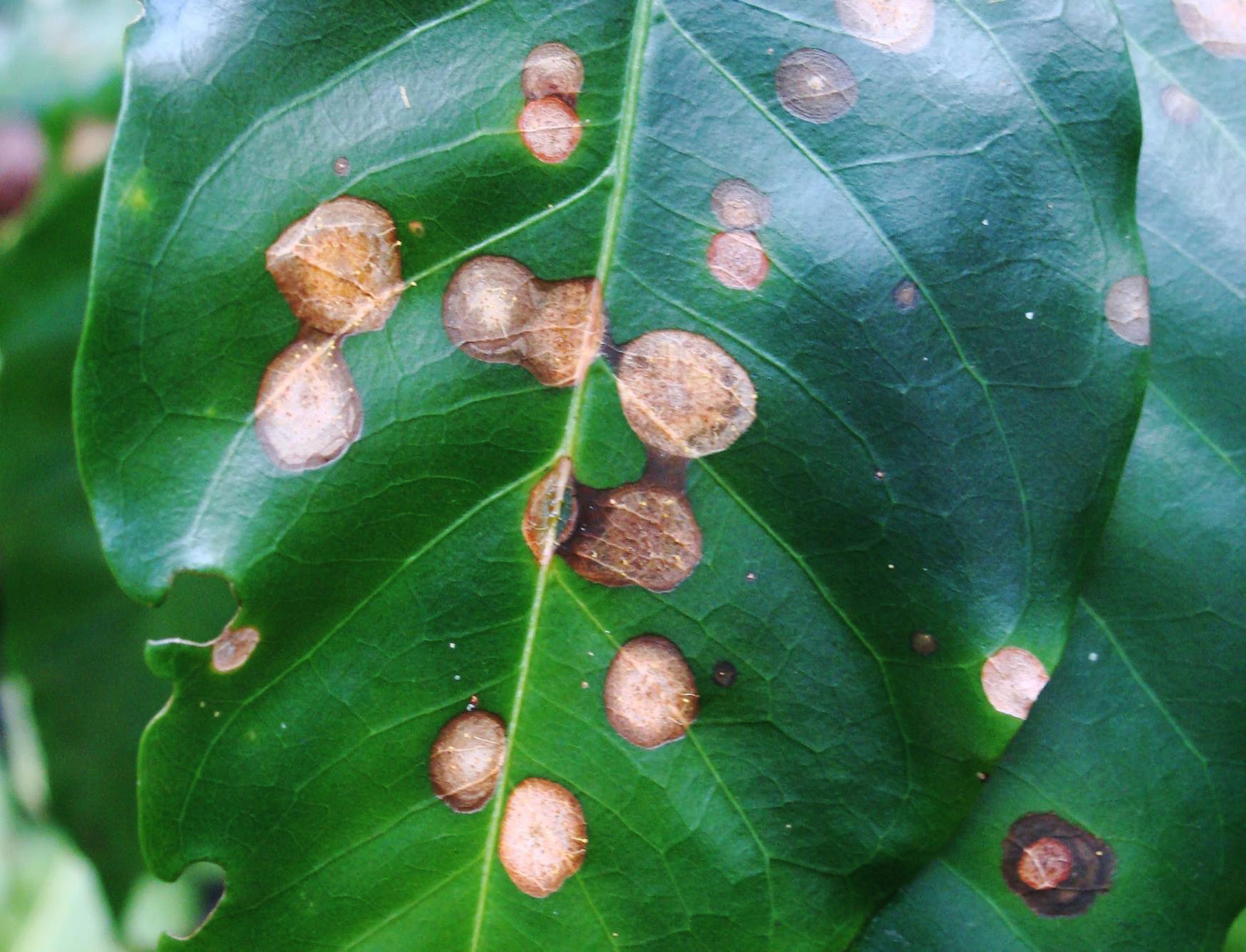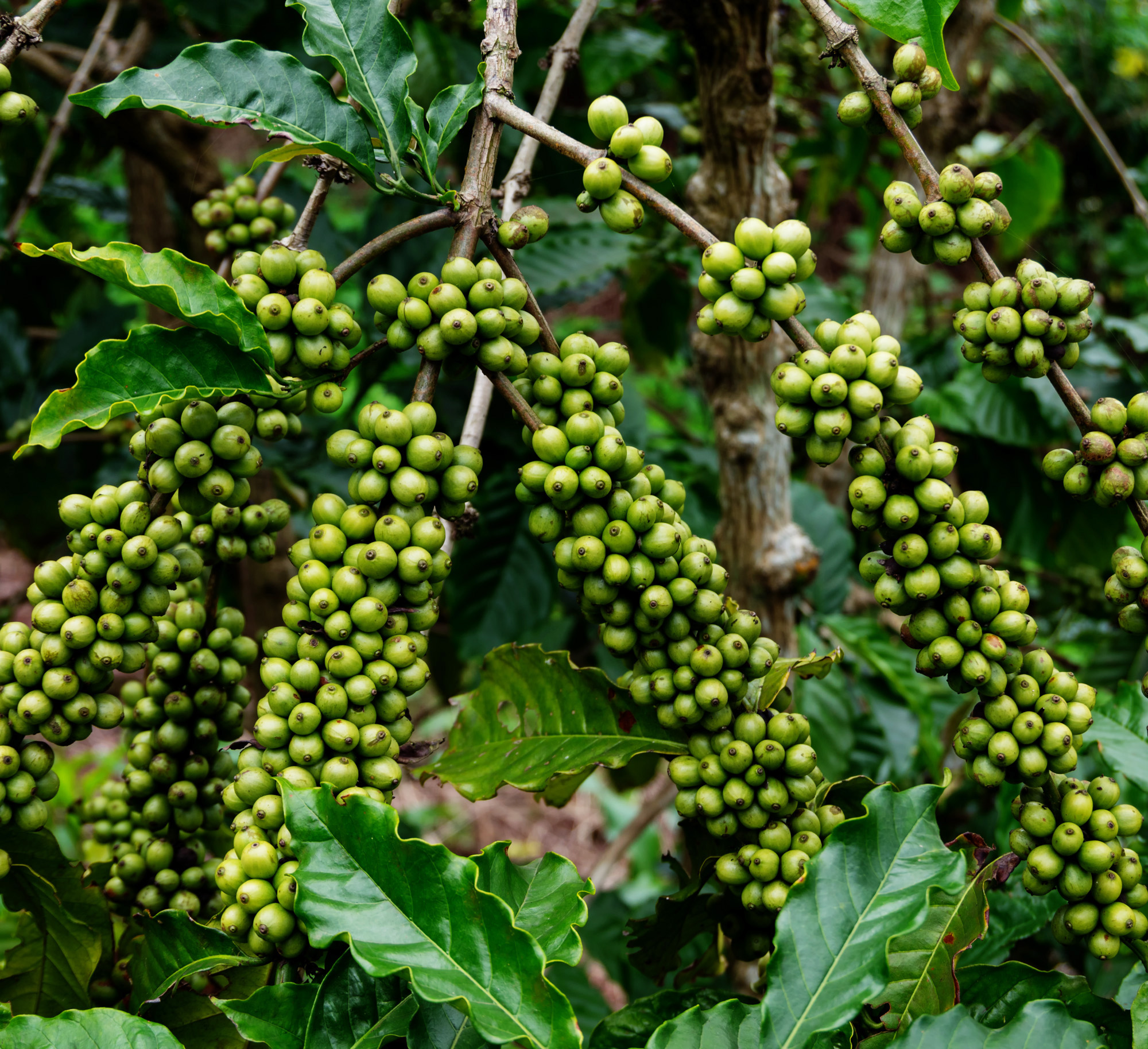In the years since the 2012 leaf rust epidemic, Guatemalan farmers have planted an increasing amount of modern, rust-resistant hybrids. The two major categories of these, Catimor و Sarchimor, are based on crosses between the Timor hybrid and the dwarf varieties Caturra و Villa Sarchi, respectively. The Timor hybrid, a cross between arabica and robusta, has robusta’s المقاومة to leaf rust and other مسببات الأمراض. such as coffee berry disease; its cup quality is intermediate between the two species. The various varieties derived from these crosses have represented an attempt to restore the cup quality of the arabica parents whilst retaining robusta’s disease المقاومة. These hybrids are typically high yielding and drought resistant. All are, however, susceptible to the fungal disease ojo de gallo (Mycena citricolor) which attacks the leaves of coffee plants, creating spots or holes in the leaves, eventually causing them to drop from the plant.
 A coffee leaf affected by ojo de gallo (Mycena citricolor). Image from CAB International Plantwise, published under a CC-BY-SA 4.0 licence.
A coffee leaf affected by ojo de gallo (Mycena citricolor). Image from CAB International Plantwise, published under a CC-BY-SA 4.0 licence.
Catimor varieties found in Guatemala include Lempira و Costa Rica 95, selected from the Catimor cross designated T-8667; Anacafé 90 و Ihcafé 90, selected from the Catimor cross T-5175; and Catimor T-5269.
One particularly successful Catimor hybrid in Guatemala has been Anacafé 14, the result of a natural cross between Catimor T-5175 و Pacamara. Anacafé 14 was released as a variety in 2014. It is drought tolerant and produces high yields, with the potential for very good cup quality when grown at higher altitudes, up to 1,600 metres (5,250 feet) above sea level.
 Densely packed cherries on a Catimor tree.
Densely packed cherries on a Catimor tree.